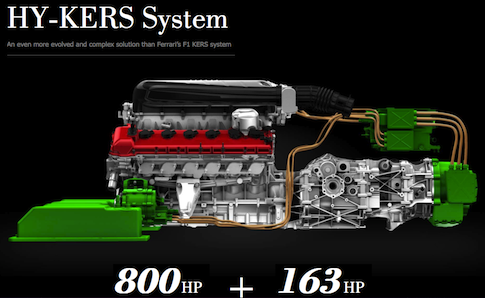 "Wheelerguy" (wheelerguy)
"Wheelerguy" (wheelerguy)
12/30/2015 at 10:26 • Filed to: None
 0
0
 6
6
 "Wheelerguy" (wheelerguy)
"Wheelerguy" (wheelerguy)
12/30/2015 at 10:26 • Filed to: None |  0 0
|  6 6 |

If a KERS system can be made to stay turned on and working with the engine as you drive.
 BringBackTheCommodore
> Wheelerguy
BringBackTheCommodore
> Wheelerguy
12/30/2015 at 10:40 |
|
Typically, it’s activated during braking, but if it were re-programmed to be charged up and discharged during normal driving, I suppose it could be possible.
 AMGtech - now with more recalls!
> Wheelerguy
AMGtech - now with more recalls!
> Wheelerguy
12/30/2015 at 10:40 |
|
Soooo... A hybrid?
 Supreme Chancellor and Glorious Leader SaveTheIntegras
> Wheelerguy
Supreme Chancellor and Glorious Leader SaveTheIntegras
> Wheelerguy
12/30/2015 at 11:07 |
|
A hybrid on steroids?
 Sam
> Wheelerguy
Sam
> Wheelerguy
12/30/2015 at 12:57 |
|
That’s called a hybrid. It wouldn’t work currently, because the batteries aren’t nearly big enough. If they made the batteries big enough for it to make sense, the cars would be very heavy and it would offset the added performance.
 WiscoProud
> Wheelerguy
WiscoProud
> Wheelerguy
12/30/2015 at 14:19 |
|
Does anyone know if any auto manufacturers are working on flywheel based hybrid systems? It would eliminate the need for batteries. It would need to “charge up” as you initially drove, but I think it would make a big difference with stop and go traffic.
 GhostZ
> WiscoProud
GhostZ
> WiscoProud
01/02/2016 at 08:14 |
|
I think the issue here is safety and maintenance. Flywheel based systems in a crash release all of that spinning energy in the form of a flying wheel of death.
Plus, you’d have to charge up an absolutely insane amount of energy for a flywheel to replace a battery, since you’d have to have enough kinetic energy in it to last the 200+ miles of driving you would need to draw out of it with every charge.
On top of that, they’re not really designed to go 30,000+ miles without maintenance, since every little bit of balance change, momentum change, and tolerance change affects the flywheel’s overall friction and efficiency. I don’t think anyone’s managed to make a flywheel that can change speed rapidly without.
And, lastly, if the car is sitting still, it loses potential energy much faster with a flywheel than a battery.